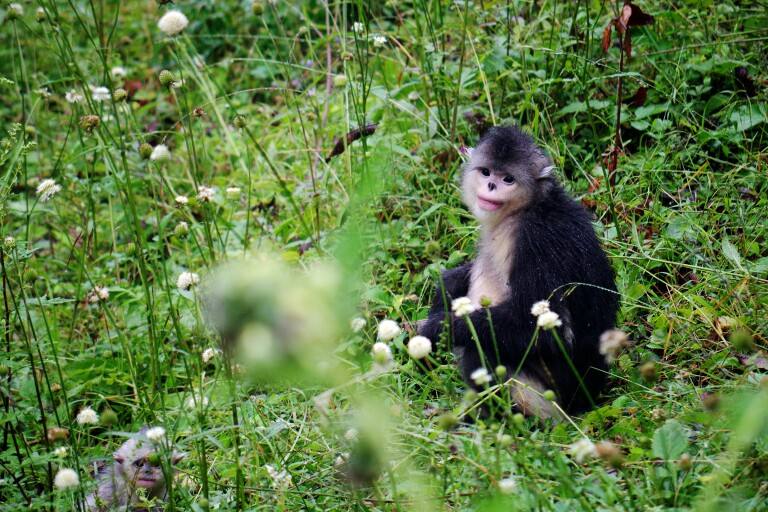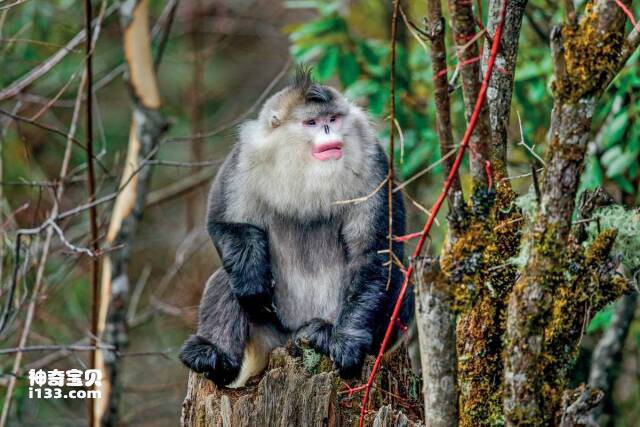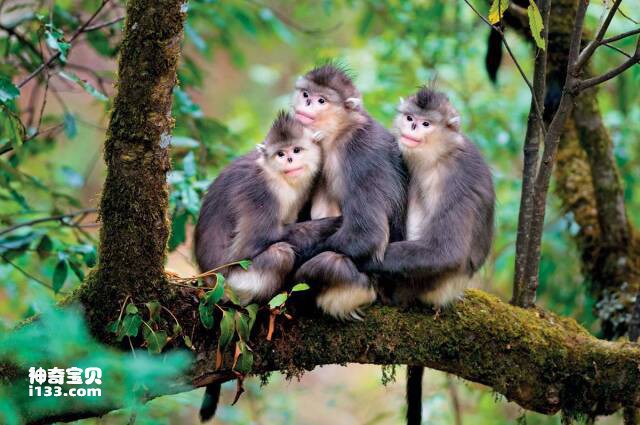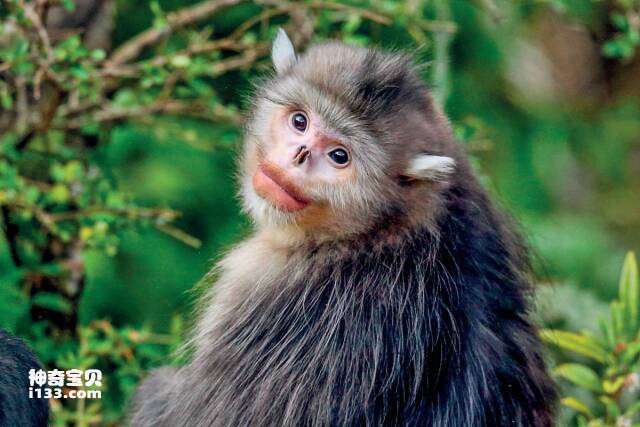Rhinopithecus bieti
IUCN
LCBasic Information
Scientific classification
- name:Rhinopithecus bieti
- Scientific Name:Black Snub-nosed Monkey,Yunnan golden monkey, Yunnan snub-nosed monkey
- Outline:Primates
- Family:Primates Cercopithecidae Rhinopithecus
Vital signs
- length:51-83cm
- Weight:9-17kg
- lifetime:20year
Feature
One of the 25 most endangered primates in the world
Distribution and Habitat
The Yunnan snub-nosed monkey is only distributed in a narrow area of the Yunling Mountains between the Jinsha River and the Lancang River in China, which is the southern edge of the Qinghai-Tibet Plateau and the central area of the Hengduan Mountains. The area is about 20,000 square kilometers, extending northward to the Ningjing Mountains in Tibet, including Deqin County, Weixi County, Lijiang County, Jianchuan County, Lanping County, Yunlong County and other counties in Yunnan, as well as Mangkang County in Tibet. The northernmost monkey group is the Zhina monkey group in the Yunnan Snub-nosed Monkey National Nature Reserve in Mangkang, Tibet, and the southernmost monkey group is the Tianchi monkey group in the Yunlong Tianchi National Nature Reserve in Yunnan.
The Yunnan snub-nosed monkey is the primate with the highest altitude in the world. It lives in the alpine primeval forests at an altitude of 2500-5000 meters in southeastern Tibet and northwestern Yunnan. It usually mo
Appearance
The Yunnan snub-nosed monkey is slightly larger than the Sichuan snub-nosed monkey, and its facial features are similar to those of the Sichuan snub-nosed monkey. Its body hair is not golden yellow, but mainly gray-black and shiny. Its hands and feet are also black, so it is also called the black snub-nosed monkey, but the inner side of the upper arm, throat, neck, buttocks and thighs are all gray-white, forming a clear contrast. Unlike the Guizhou snub-nosed monkey, its large white spots grow on both sides of the buttocks, and the hair on the spots is white and long. The hair on the back and shoulders is also longer, and there is a pointed long black hair crown in the center of the male monkey's head. The eye area and snout are blue-gray or flesh-pink, and the tip of the nose is upturned and dark blue. The back of the body, hands, feet and tail are gray-black, and there are sparse long gray-white hair on the back. The ventral side of the body, the side of the neck, the buttocks a
Details
The Yunnan golden monkey is also known as the black snub-nosed monkey. It was once called the black golden monkey, snow monkey, big green monkey, white monkey, flower monkey, flying monkey, etc. It is called "Zhijie" in Tibetan, "Zami Puza" in Lisu, and "Baiyao" in Bai language (note: Baiwen baip hhod means white monkey).

The social organization of the Yunnan snub-nosed monkey is a multi-layered society, with a monkey group of 50-500 individuals. Each monkey group consists of a breeding group and at least one all-male group, which move together; multiple monkey groups move in the same area to form a community, just like a human village; the breeding group is composed of multiple polygamous breeding (family) units, and the breeding family includes 1 adult male and 1-6 females, and their offspring. The adult male of the family becomes the main male; the all-male group is mainly composed of young males and adult males (males who have not formed a family unit, or replaced main males).
Yunnan snub-nosed monkeys are a typical polygamous system, with an adult male to female ratio of about 1:3. This small family is the basic breeding unit. At the same time, there is also an "all-male" subgroup composed of bachelors outside the small family. They are the losers in the process of competing for mating rights and those young men who have not yet fully grown up. Female monkeys give birth to a baby every two years, and the gestation period is about 7 months.
In 1987, it was estimated that there were no more than 1,000 golden snub-nosed monkeys in Yunnan, and in 1993, it was estimated that there were about 1,000 in Mangkang, Tibet. A comprehensive survey from 1987 to 1994 found 13 wild monkey groups with about 1,500 monkeys. In 2003, the survey results of the Kunming Institute of Zoology of the Chinese Academy of Sciences showed that the number of this species has increased to nearly 1,700. According to the survey results in October 2004, there are 15 groups of Yunnan snub-nosed monkeys in the wild, with a total population of about 1,700. Among them, there are 3 groups in the Yunnan snub-nosed monkey national nature reserve in Mangkang, Tibet, with a population of more than 300; 6 groups in the Baima Snow Mountain National Nature Reserve in Yunnan, with a population of about 1,000; 3 groups in the Yunling Provincial Nature Reserve, with a population of about 150; 2 groups at the junction of Yulong, Lanping and Jianchuan counties in Yunnan Province, with a population of about 200; and 1 group in Deqin County, Yunnan, near the junction of Mangkang County in Tibet, with a population of about 80. Globally, the total population in 2006 was estimated to be less than 2,000, with less than 1,000 adults, and the population is on a downward trend. On August 7, 2013, after several days of field investigation and analysis and research, a joint investigation team of Chinese and French biologists revealed to reporters that the number of Yunnan snub-nosed monkeys in China has increased to more than 3,000. In 2022, the population of Yunnan snub-nosed monkeys increased to more than 3,800.
On July 15, 2019, the Yunnan snub-nosed monkey national protection network was established in Shangri-La, Diqing Tibetan Autonomous Prefecture, Yunnan Province.
Listed in the 2008 Red List of Endangered Species of the World Conservation Union (IUCN) ver 3.1-Endangered (EN).
Listed in the Appendix I of the Washington Convention on International Trade in Endangered Species.
Listed in the Chinese National Key Protection Level: Level 1 Effective Date: 1989.
Listed in the Red Data Book of Endangered Animals in China: Endangered Effective Date: 1996.
Listed in the first level of the "List of National Key Protected Wildlife in China".
In August 2002, the 19th World Primate Conference listed the Yunnan snub-nosed monkey as one of the 25 most endangered primates in the world.
Protect wildlife and eliminate game.
Maintaining ecological balance is everyone’s responsibility!



 >
>









